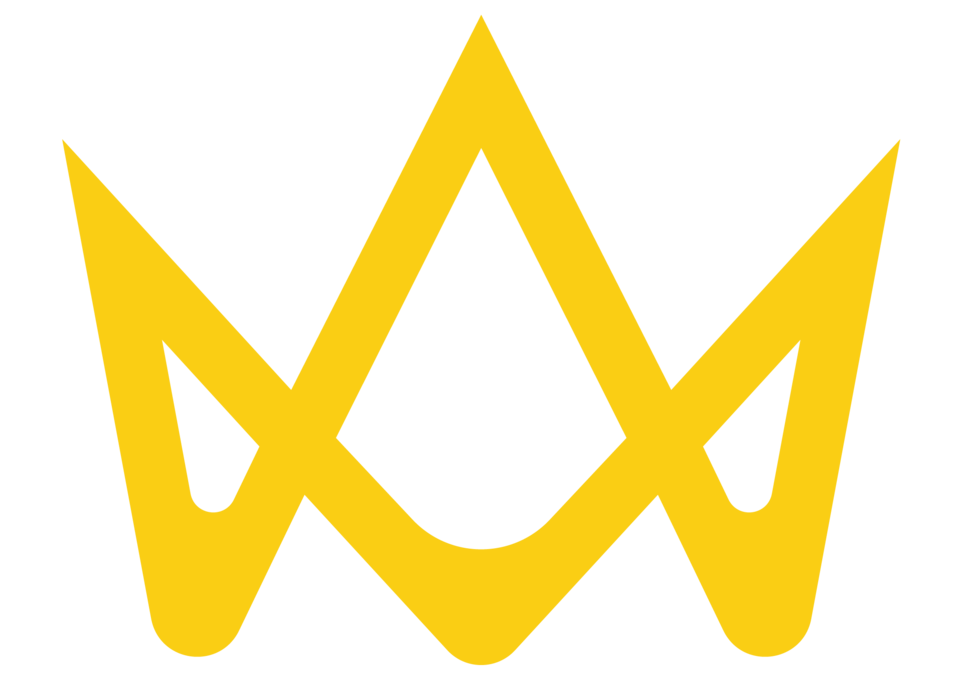THE RESPIRATORY SYSTEM: YOUR BODY'S OXYGEN EXCHANGE SYSTEM

The Respiratory System is a complex network of organs and tissues responsible for one of the most vital functions of the human body: respiration. It's a process that involves the exchange of gases between the body and the environment, primarily focusing on the intake of oxygen (O2) and the removal of carbon dioxide (CO2), which is a waste product of metabolism.
THE BREATHING PROCESS:
- Inhalation (Inspiration): When you take a breath in, the diaphragm contracts and moves downward, while the intercostal muscles lift the ribcage upward and outward. This action increases the volume of the chest cavity, causing air to rush into the lungs due to the pressure difference between the lungs and the outside environment. Oxygen is absorbed into the bloodstream in the alveoli.
- Exhalation (Expiration): During exhalation, the diaphragm relaxes and moves upward, and the intercostal muscles relax, reducing the chest cavity's volume. This increase in pressure forces air out of the lungs, expelling carbon dioxide, which is a waste product of metabolism.
GAS EXCHANGE:
Within the alveoli of the lungs, gas exchange occurs. Oxygen from the inhaled air diffuses across the thin walls of the alveoli into the bloodstream, where it binds to hemoglobin in red blood cells for transport to body tissues. Simultaneously, carbon dioxide, a waste product of cellular metabolism, diffuses from the bloodstream into the alveoli and is then exhaled.
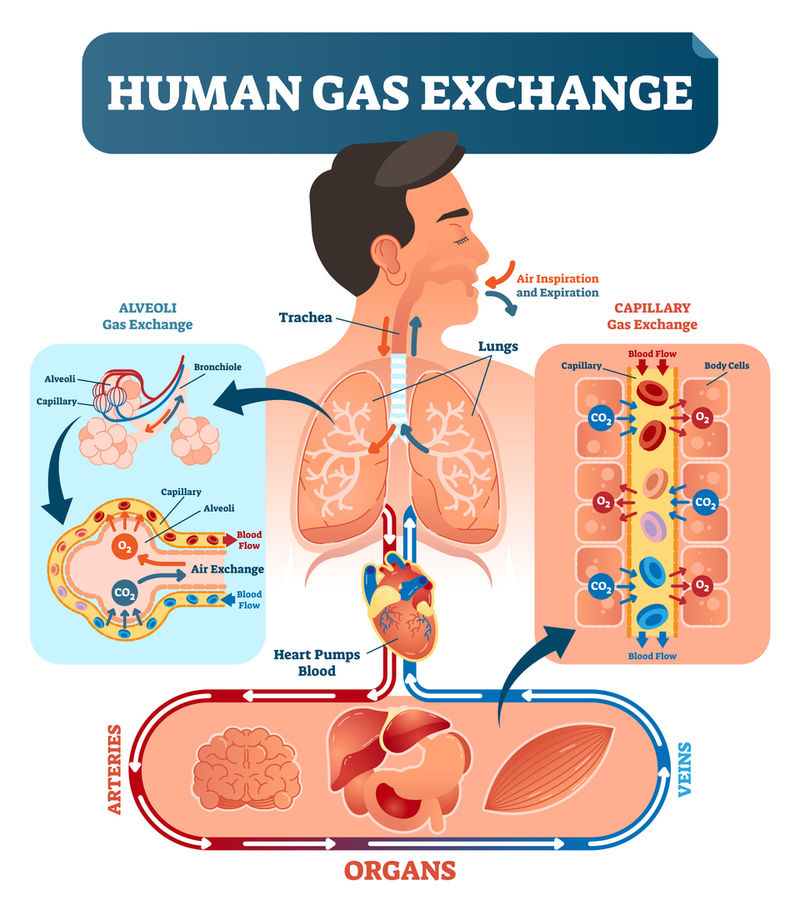
RESPIRATORY REGULATION:
The respiratory rate and depth are regulated by the respiratory control centers in the brain, primarily the medulla oblongata and the pons. These centers respond to changes in blood oxygen and carbon dioxide levels, ensuring that the body maintains a proper balance of these gases.
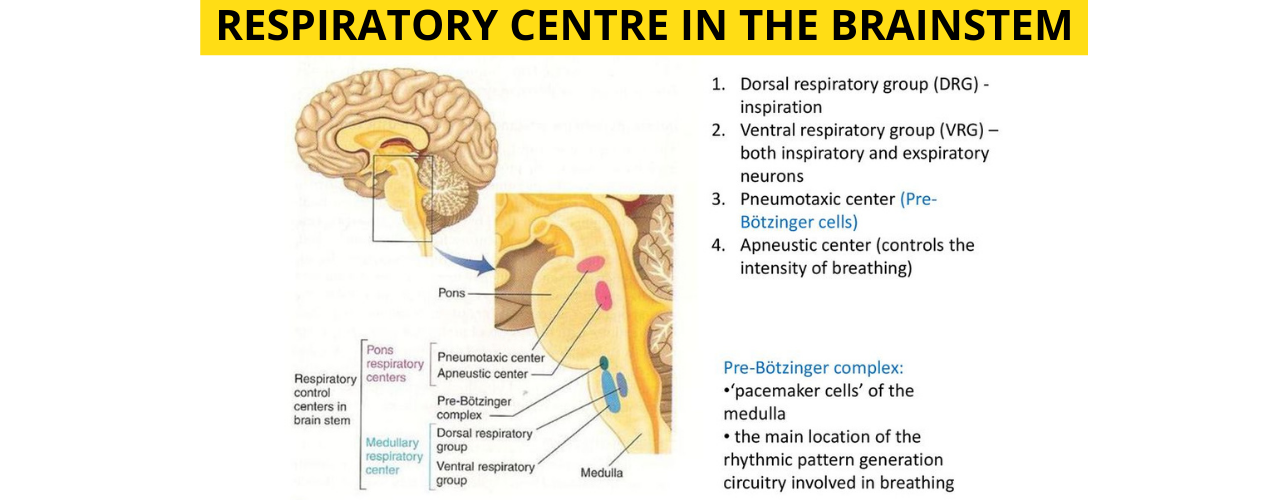
In summary, the respiratory system is a complex and highly efficient network of organs and muscles responsible for the exchange of oxygen and carbon dioxide, essential for the body's energy production and overall health. Its proper functioning is critical for sustaining life and supporting physical activities, making it a fundamental component of living an optimal life.
RESPIRATORY SYSTEM BREAKDOWN
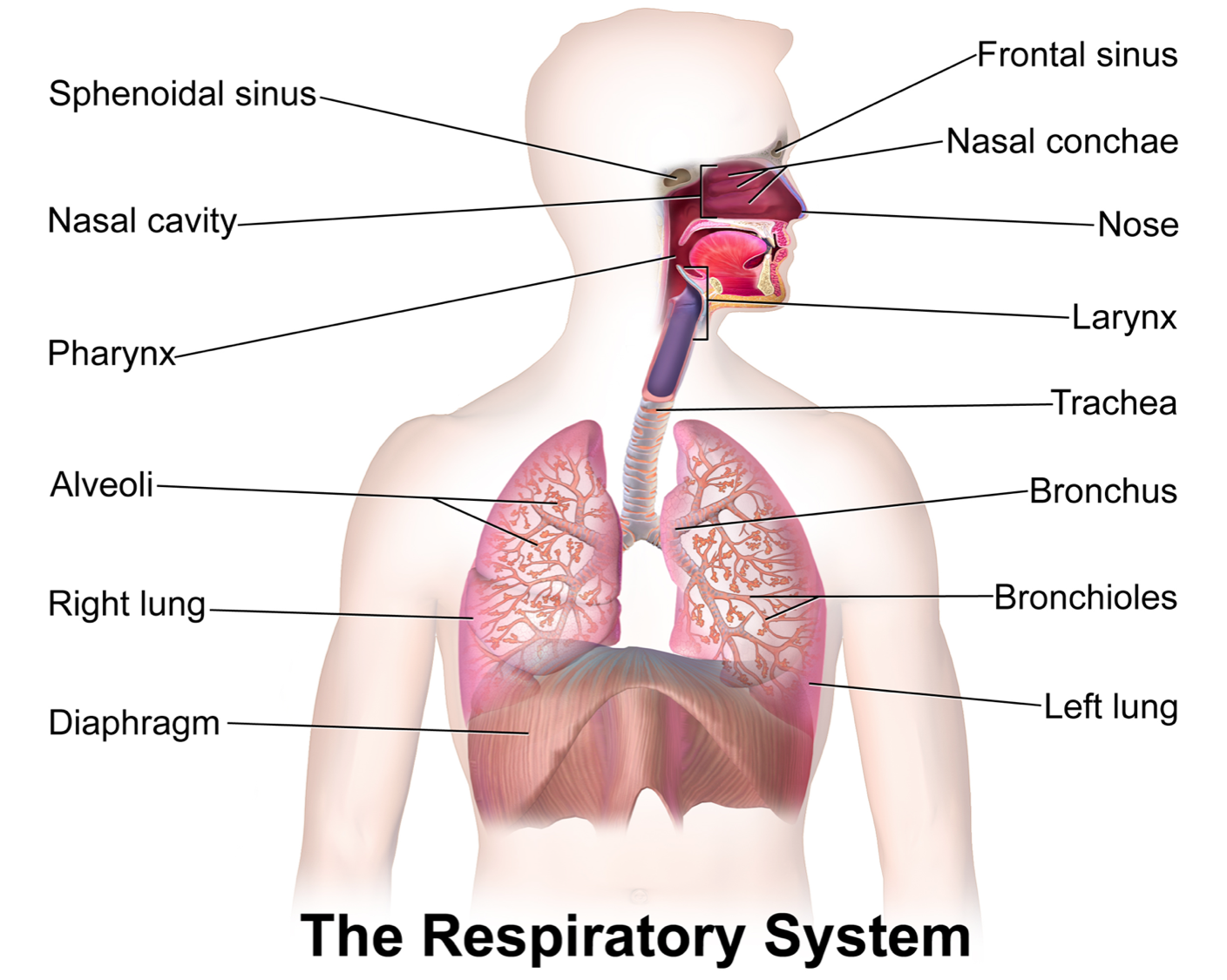
HEAD
NASAL PASSAGE:
- Nose: The nose serves as the primary entry point for inhaled air. It is equipped with hairs and mucus to filter out particles and humidify the air.
- Nasal Conchae: These are three bony projections (superior, middle, and inferior) inside the nasal cavity that help increase the surface area of the nasal mucosa, aiding in air filtration and humidification.
- Frontal Sinus: Air-filled cavities located within the frontal bone of the skull.
- Sphenoidal Sinus: Air-filled cavities located within the sphenoid bone of the skull.
- Nasal Cavity: The nasal cavity is a space within the nose lined with mucous membranes and tiny blood vessels. It further filters, warms, and moistens incoming air.
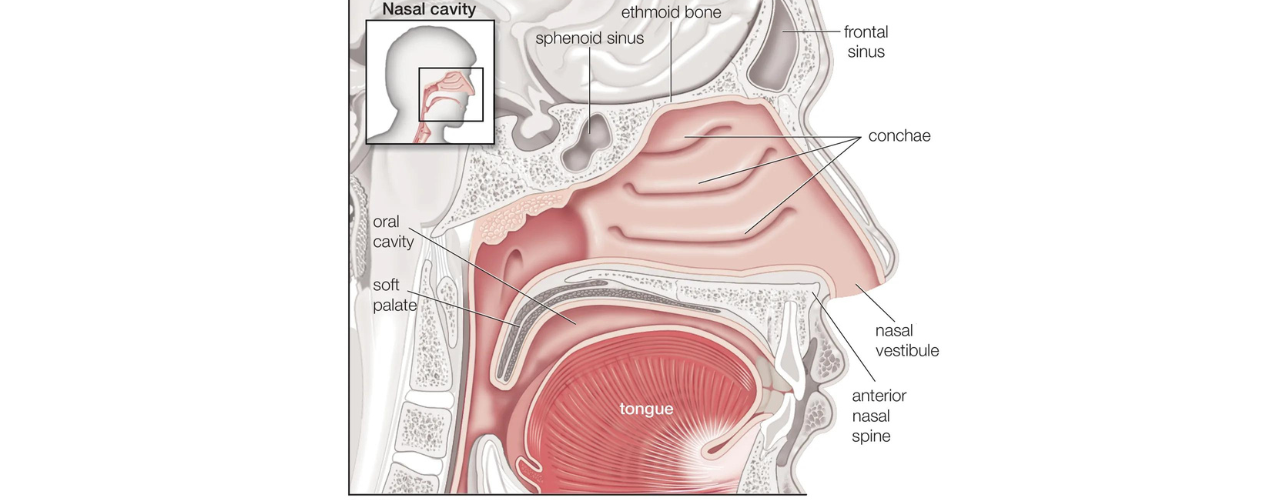
OROFACIAL COMPLEX:
- Mouth: The mouth can serve as an alternative entry point for air during breathing.
- Tongue: The tongue is a muscular organ located in the mouth. The position of your tongue plays an important role in influencing the shape of the face as well as the efficiency of breathing.
- Pharynx: The pharynx is a muscular tube that connects the mouth and nasal passages to the trachea and esophagus. It serves as a common pathway for both air and food.
- Larynx: The larynx, or voice box, is a structure within the throat containing vocal cords that produce sound when air passes over them.
BODY
LUNGS:
- Trachea: The trachea, or windpipe, is a rigid tubular structure that connects the larynx to the bronchi. It contains C-shaped cartilage rings to keep it open and allow for air passage.
- Left & Right Lung: The lungs are paired organs that occupy the chest cavity. The right lung has three lobes, while the left lung has two. They are the primary sites of gas exchange in the respiratory system.
- Bronchus: The trachea divides into two bronchi—one leading to each lung. These bronchi further branch into smaller bronchioles.
- Bronchioles: Bronchioles are small, thin-walled tubes that branch out within the lungs. They continue to divide into even smaller structures.
- Alveoli: Alveoli are tiny, grape-like air sacs located at the ends of bronchioles. This is where the exchange of oxygen and carbon dioxide takes place between the air and the bloodstream.
DIAPHRAGM / RIBS:
- The diaphragm is a dome-shaped muscle that separates the chest cavity (thoracic cavity) from the abdominal cavity. It is the primary muscle responsible for breathing and it is non uniform in its shape.
- Type 1 Muscle: The diaphragm contains slow-twitch, Type 1 muscle fibers that are fatigue-resistant and well-suited for prolonged, continuous contractions required for regular breathing.
- Type 2 Muscle: Some fast-twitch, Type 2 muscle fibers are also present in the diaphragm, which can be recruited during heavy breathing or increased respiratory demand.
- Ribs/Intercostals: Our ribcage acts as a protective mechanism for our lungs and heart like a cage. Our accessory breathing muscles work to assist our diaphragm in expanding our ribcage in driving our breath.
The respiratory system is a highly coordinated system involving these structures to facilitate the exchange of oxygen and carbon dioxide, supporting the body's energy needs and overall functioning.
